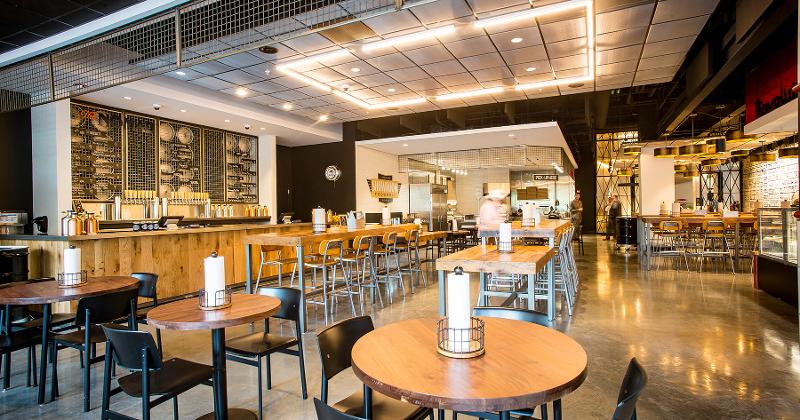Restaurant sustainability practices can easily influence buying decisions, according to a 2022 global survey by Oracle’s Restaurant Scene. This is attributed to the fact that restaurants with recyclable or biodegradable food packaging influence the buying decision of about 49% of customers.
On the other hand, the zero carbon emissions takeout food delivery services influence around 42% of those who buy from restaurants. Another 46%, support the idea of sustainable practices in the restaurant industry.
If your restaurant lowers food waste, it can influence a staggering 54% of customers to purchase from you. This percentage can increase exponentially when you take the initiative to label food sources and ingredients clearly. Your menu items may account for a whopping 70% of purchases at your restaurant. Most importantly, sustainable practices, waste reduction, and a low carbon footprint can promote restaurant sustainability. Below are four ways restaurants can be sustainable.
1. Reduce Water Usage and Food Wastage
Practically, a restaurant needs an average of 20,000 liters of water per day. However, the amount of water your restaurant needs depends on its popularity and size. This is because most restaurant operations require a lot of water.
Fortunately, there are different ways to limit your restaurant or cafe’s overall water usage. In this case, make sure to install low-flow faucets. Alternatively, invest in taps that operate solely from a motion sensor to save several liters of water used daily. Water-efficient toilets and waterless urinals can also help your restaurant go green.
Besides the aforementioned green restaurant-friendly practices, ensure that your kitchen is fully equipped with Energy Star-certified ice makers, dishwashers, and steamers. Use clear and well-illustrated digital signage to remind your employees of the importance of saving water. Place these digital signage displays in strategic areas for everyone to see at a short moment’s notice.
Another option to maintain a sustainable restaurant is to reduce food waste. Ensure that food from your customers’ plates and the kitchen is donated to your local farmers for compost use. You may also donate any food left to the homeless shelters.
Repurposing and recycling initiatives will undoubtedly lead to a drastic drop in the amount of water and food wasted. Always aim at zero waste to make your restaurant free of greenhouse emissions.
2. Shift From Plastic to Paper
The best way restaurant owners can create a positive environmental impact during this pandemic period is to shift from plastic to paper containers. The fewer plastic materials your restaurant uses in the food service delivery, the fewer carbon emissions it creates.
Recycled toilet paper, paper cups, and Tupperware containers are great options for single-use plastics such as plastic straws and cups. These recyclable packaging containers and hand napkins can help with your restaurant’s sustainability efforts. With all restaurant sustainability alternatives in place, you cannot have an excuse to use or even reuse plastic containers.
3. Go Digital
Shifting from plastic to paper use is not enough when it comes to your restaurant’s sustainability. As such, you need to go the extra mile to reduce paper usage significantly. Most businesses are already going paperless. With that being said, you have no valid reason for not replacing paper with digital, especially when preparing your menu.
Take advantage of available apps to create your digital menus. Digital loyalty apps like Stamp Me enable your customers to access their favorite dishes through SMS and Push Notifications. Apart from that, you can use the available social media platforms to advertise your restaurant or food products rather than using paper to reach out to your target audience.
After all, this restaurant’s sustainability option is reusable several times. Plus, this option is affordable with zero emissions to your environment.
4. Limit Your Restaurant Energy Consumption
High energy consumption is both costly and impactful to the environment. In particular, the restaurant industry is known for higher energy consumption compared to other businesses. This energy usage covers refrigeration of perishable food products and seasonal produce, lighting, and other onsite restaurant amenities.
As an experienced restaurant owner, you can cut down on energy costs. You can achieve this feat through the substitution of higher energy-consuming appliances and electrical equipment. For instance, you may install an led lighting system or enforce “an-hour on” or “an-hour” off practice to cut your air condition expenses. Remember, the long-term energy-saving in your restaurant outweighs your upfront expenses of installing brand-new energy-saving appliances.
The Bottom Line
Restaurants can be sustainable when they adopt some of the above-mentioned ways. Your restaurant can achieve this goal if you and your staff members embrace helpful sustainable practices. Most of these restaurants’ sustainability practices work towards making your eating joint become an eco-friendly establishment.
For that reason, make sure to reduce food wastage, lower water usage, go digital or paperless, and limit your restaurant’s energy consumption. In addition to that, find creative ways that can incorporate your restaurant’s commitment to every possible sustainability effort into your loyalty program.

